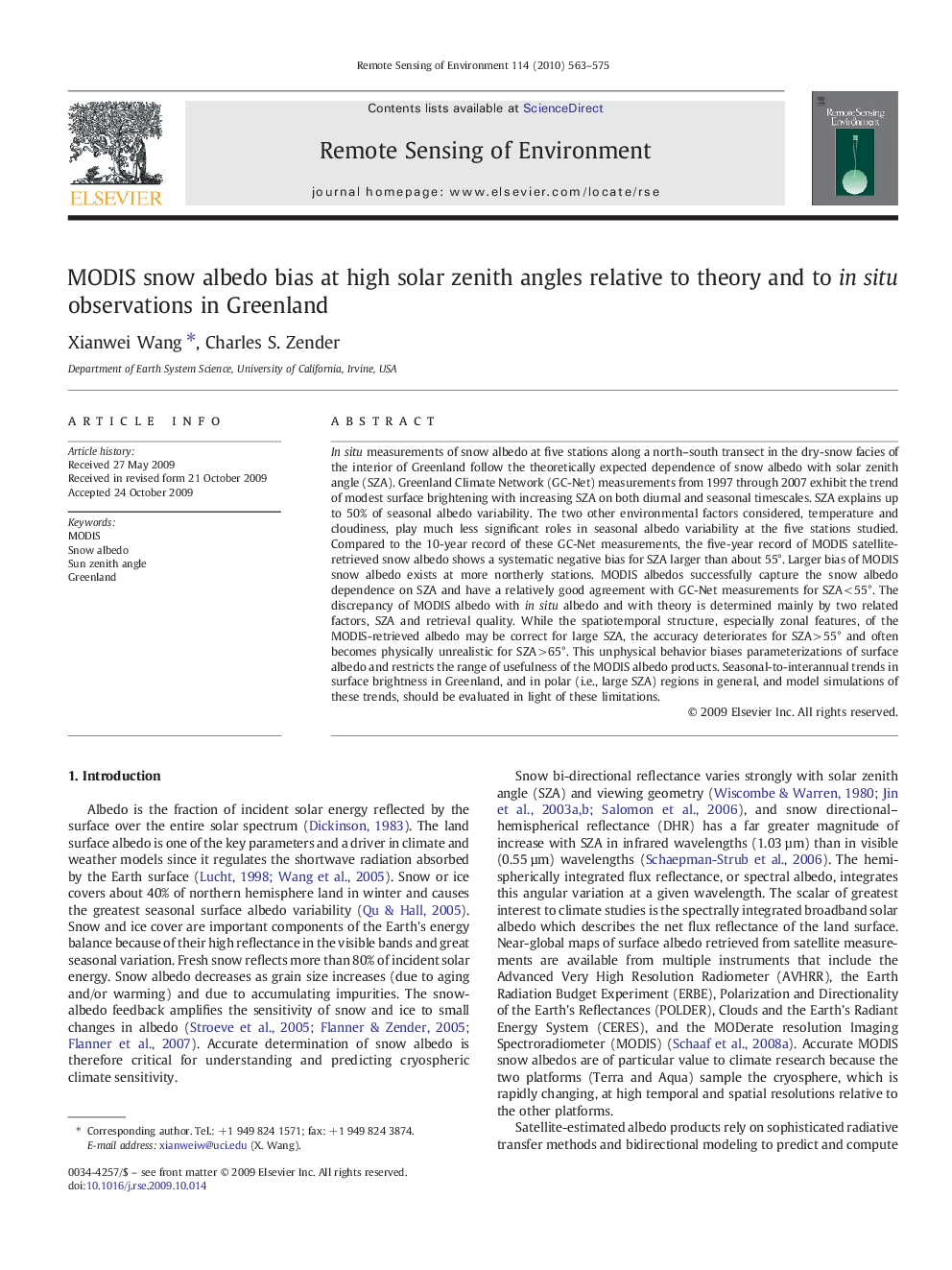| Article ID | Journal | Published Year | Pages | File Type |
|---|---|---|---|---|
| 4459885 | Remote Sensing of Environment | 2010 | 13 Pages |
In situ measurements of snow albedo at five stations along a north–south transect in the dry-snow facies of the interior of Greenland follow the theoretically expected dependence of snow albedo with solar zenith angle (SZA). Greenland Climate Network (GC-Net) measurements from 1997 through 2007 exhibit the trend of modest surface brightening with increasing SZA on both diurnal and seasonal timescales. SZA explains up to 50% of seasonal albedo variability. The two other environmental factors considered, temperature and cloudiness, play much less significant roles in seasonal albedo variability at the five stations studied. Compared to the 10-year record of these GC-Net measurements, the five-year record of MODIS satellite-retrieved snow albedo shows a systematic negative bias for SZA larger than about 55°. Larger bias of MODIS snow albedo exists at more northerly stations. MODIS albedos successfully capture the snow albedo dependence on SZA and have a relatively good agreement with GC-Net measurements for SZA < 55°. The discrepancy of MODIS albedo with in situ albedo and with theory is determined mainly by two related factors, SZA and retrieval quality. While the spatiotemporal structure, especially zonal features, of the MODIS-retrieved albedo may be correct for large SZA, the accuracy deteriorates for SZA > 55° and often becomes physically unrealistic for SZA > 65°. This unphysical behavior biases parameterizations of surface albedo and restricts the range of usefulness of the MODIS albedo products. Seasonal-to-interannual trends in surface brightness in Greenland, and in polar (i.e., large SZA) regions in general, and model simulations of these trends, should be evaluated in light of these limitations.
